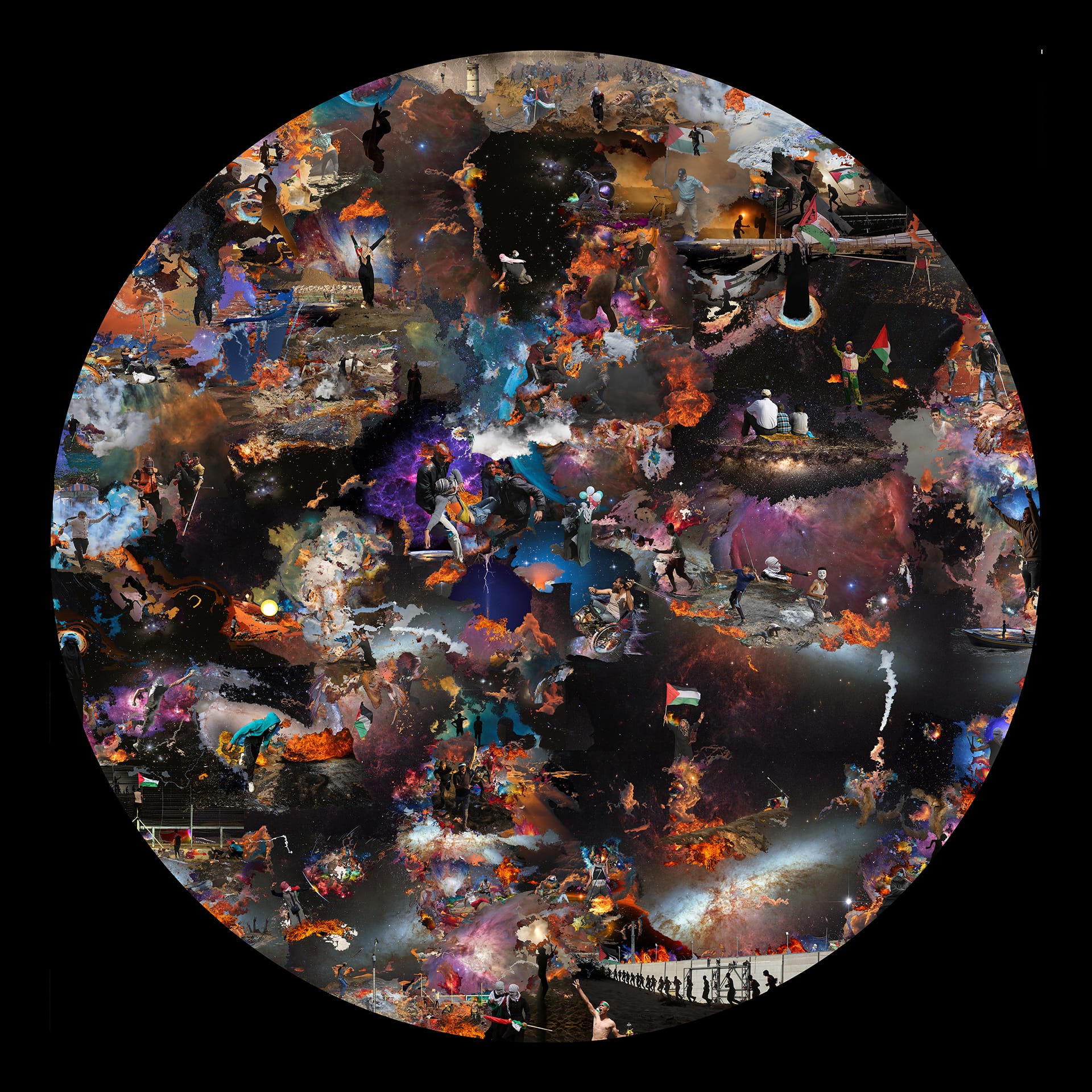
The Great March of Return
The Great March of Return is a collage including over one thousand photographs captured by five Palestinian journalists from Gaza of the crowds who have gathered every Friday since March 2018 to end the Israeli occupation. These images are contrasted with photos of outer space merging the hermetically sealed Strip with infinity, creating a monumental "present-day fresco" demonstrating a nation's eternal fight for liberation.
"Between fires, smoke bombs, death, and destruction, the great circle connects to Renaissance art, creating a "space without borders" that makes one think of a sort of a Palestinian Sistine Chapel, containing a message of rebirth. Sabella uses colors in photographic images how the painter uses his brushes and palette. The assembled photos create a new world, "a reality within reality, a journey to the beginning and end of time."
BLOCKS | Museo Riso | Albergo Delle Povere | Palermo | Daniela Brignone.
200 cm diameter, light jet print mounted on matt diasec. The artwork also exits as a video art, 10:36 minutes. In the museum collection of The Arab World Institute in Paris, and the Contemporary Art Platform, Kuwait.
https://stevesabella.space/pages/the-great-march-of-return
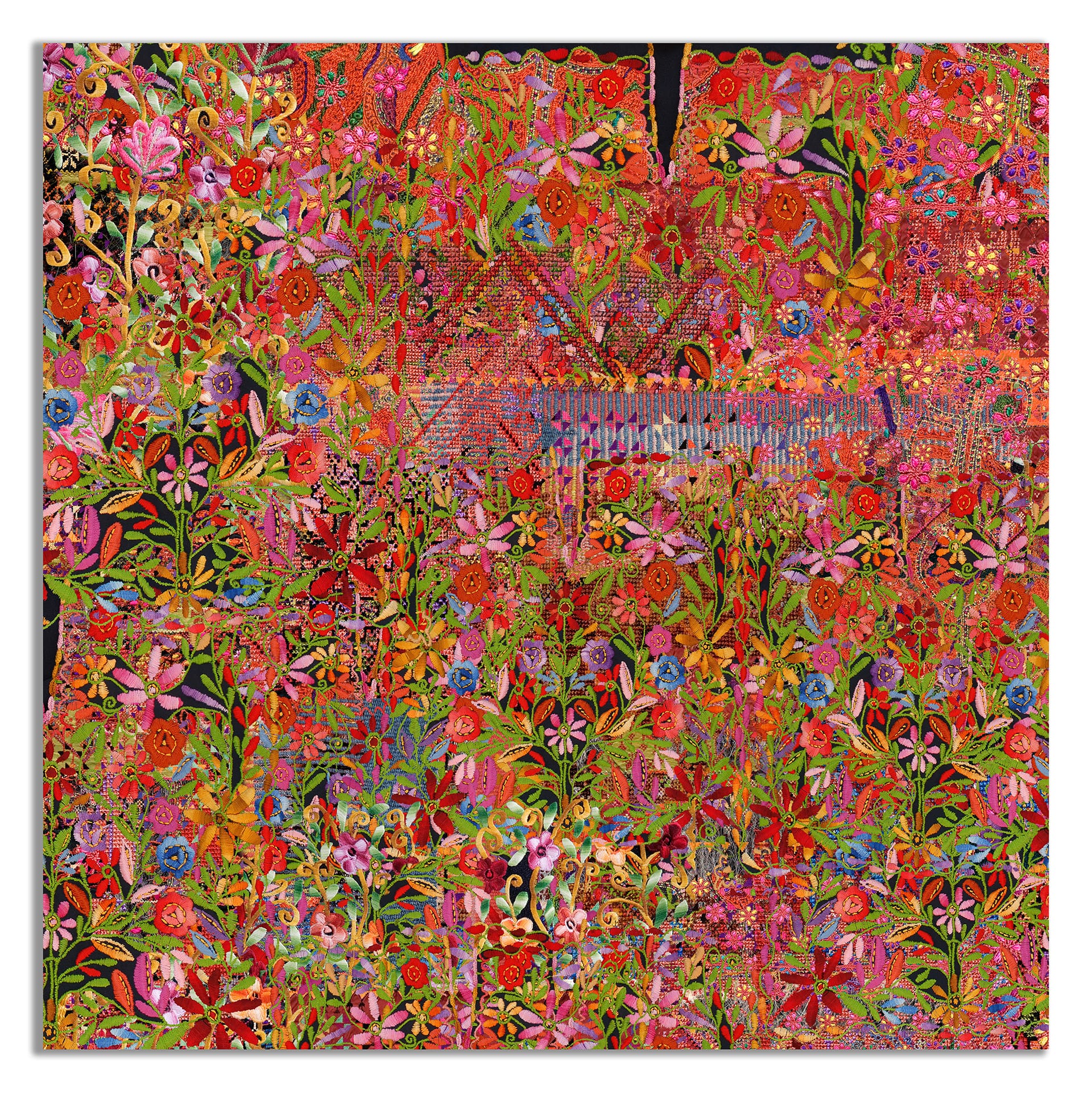

Everland
A collage of Palestinian embroidery photographed from traditional costumes. Everland celebrates all the charm that comes out of Palestine, where everything gets disrupted. Yet, the photo collage style enables the different cross stitches, among other techniques, to penetrate deep into new borders, creating unique designs that look as if they represent every other culture.
2020
80/80 cm
mounted on matt diasec
In the museum collection of the Arab World Institute in Paris.
https://stevesabella.space/pages/everland

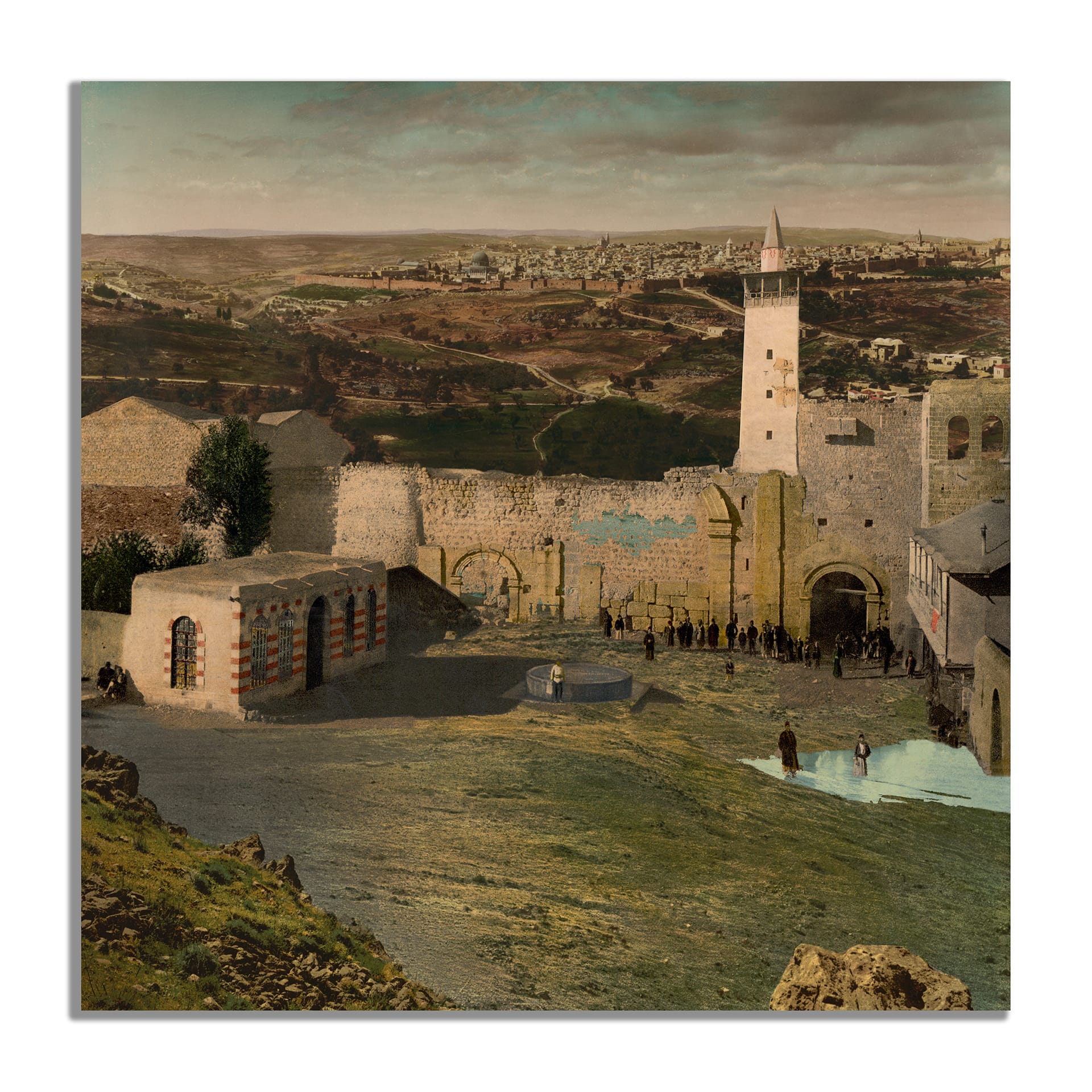
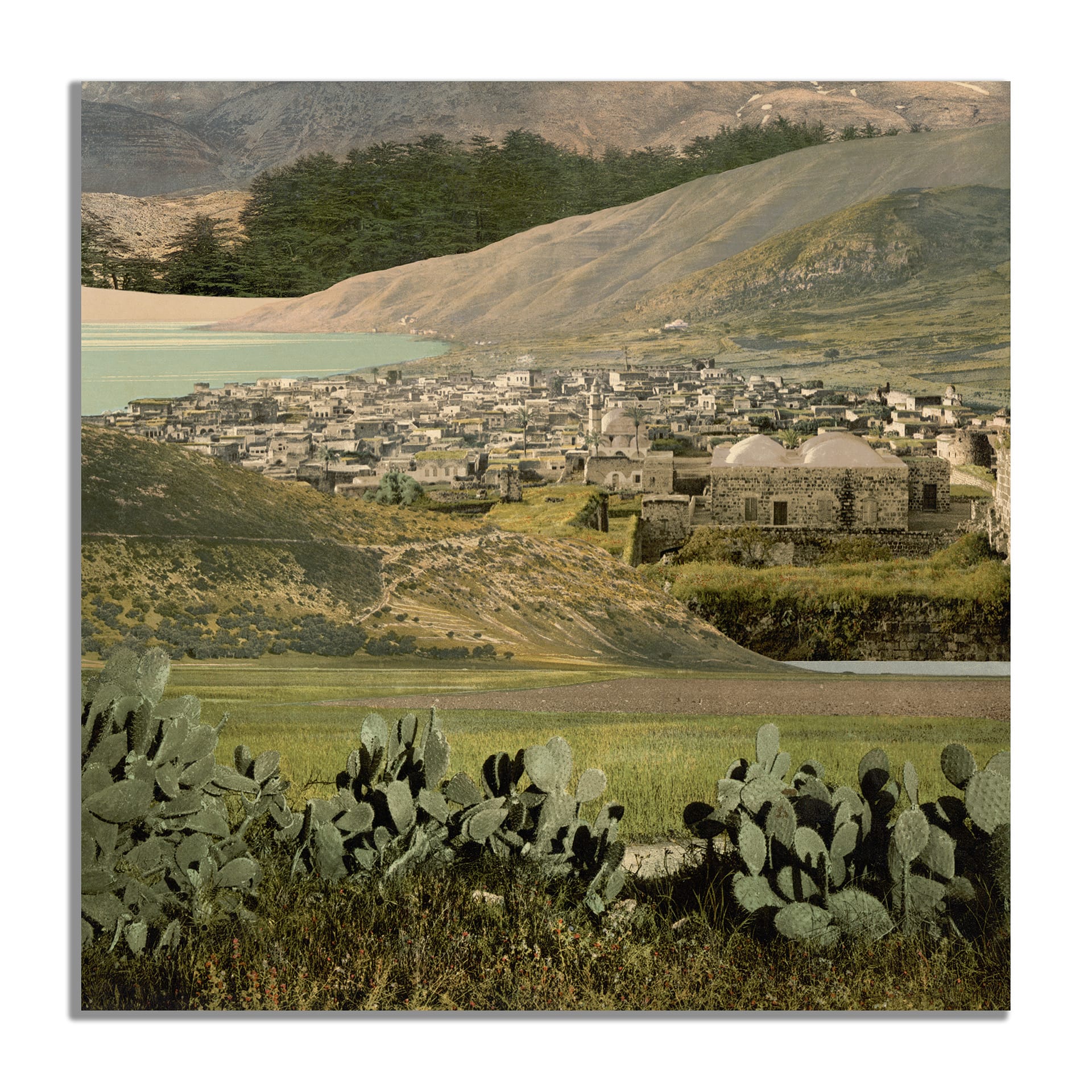
Elsewhere
Black and white photochromes from nineteenth-century historic Palestine, with a selection of images from Syria and Lebanon. Sabella collaged them, recreating the feeling of the place as if one had traveled through a time machine and was suddenly present. In search of hidden realities, Sabella wrote about how the archaeology of the future is the archaeology of the image and its genealogy. Elsewhere investigates time, the layers of history, archaeology, genealogy, geography, and anthropology, and one cannot even look at them without a dose of mythology.
"Elsewhere is the Renaissance of culture and life constantly under erasure. Yet, the spirit of the place and its people will always be alive. Elsewhere is a journey to the land that once was, the land, the place that lives in the imagination." Ader auction catalogue | Paris.
2020
50/50 cm
a constellation of 20 artworks
mounted on matt diasec
https://stevesabella.space/pages/elsewhere

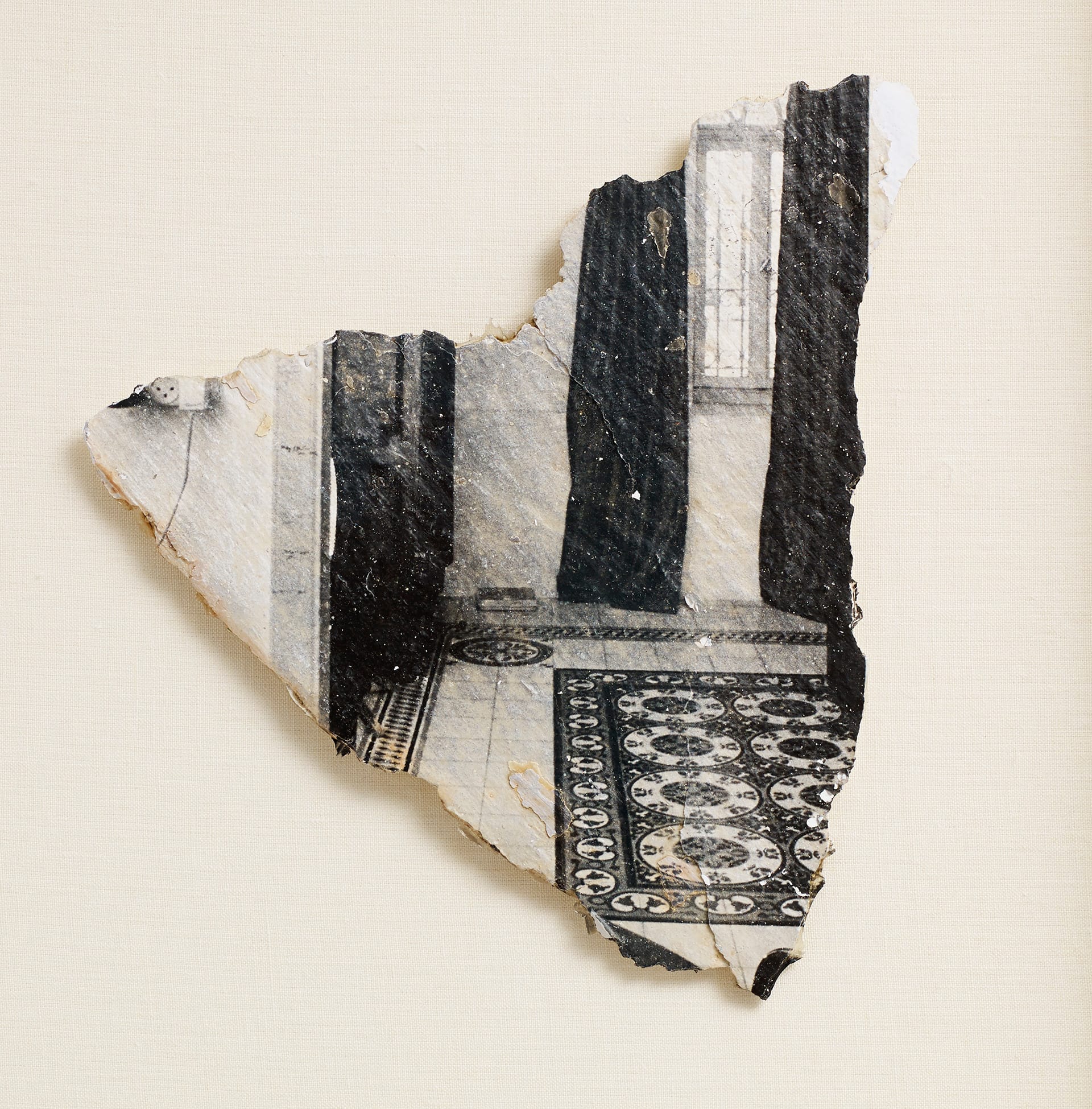
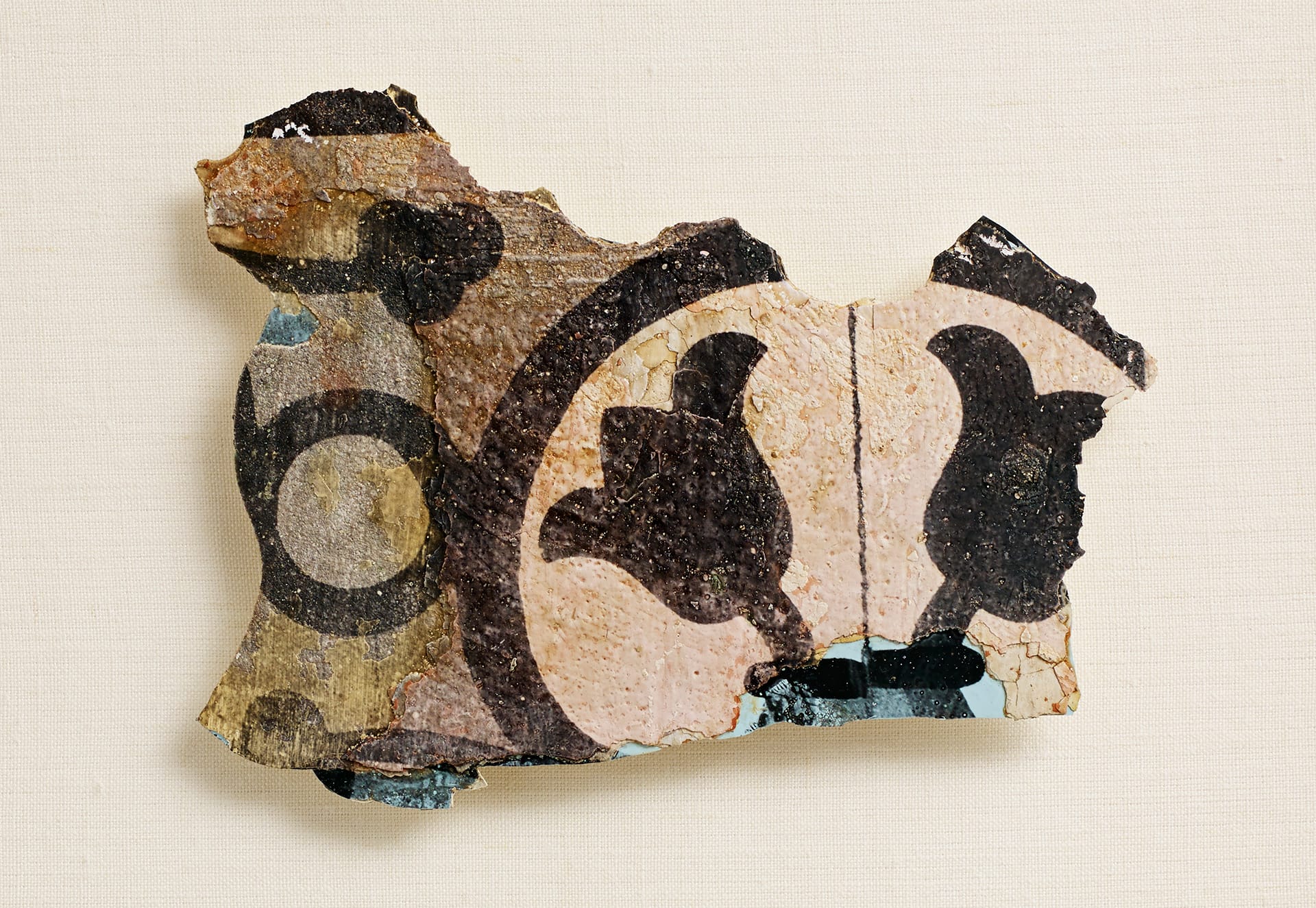
38 Days of Recollection
B&W white film negatives (generated from digital images) printed with B&W photo emulsion spread on color paint fragments collected from Jerusalem's Old City house walls. The base effectively colored the images, rendering some of them as archeological findings.
"In 2009 Sabella rented a house in Ein Karim in Jerusalem, which a Palestinian family had abandoned, to secure themselves, when they heard about the Deir Yassin massacre in April 1948. He stayed in it for thirty-eight days, taking photographs of objects—utensils, walls, pictures—visually frisking the history of the place. Then, in his parental home and in other houses in the Old City of Jerusalem, he removed pieces of walls, little bits of painted plaster, or just of stained chalk. The color photographs were copied onto black-and white film, and the pieces of fresco, flayed bits of wall, were covered in an emulsion, and the negatives from the house he lived in projected and fixed on that emulsion. Because of the different colors of the carrier, the black-and-white images take on a mysterious, dreamlike presence that really belongs to no place and no time. They look ghostly; are the absence of presence and the presence of absence, and it is hard to decide which place or time they belong to." Steve Sabella: Photography 1997 – 2014 | Hatje Cantz | Hubertus von Amelunxen.
2014
Sizes vary
UNIQUE
https://stevesabella.space/pages/38-days-of-re-collection

The Sound of Jerusalem
2020
Photo-collage of the Jerusalem’s skylines from 360 degrees and then flattened into one horizontal plane. The emerging sound waves echo Jerusalem's turbulent history.
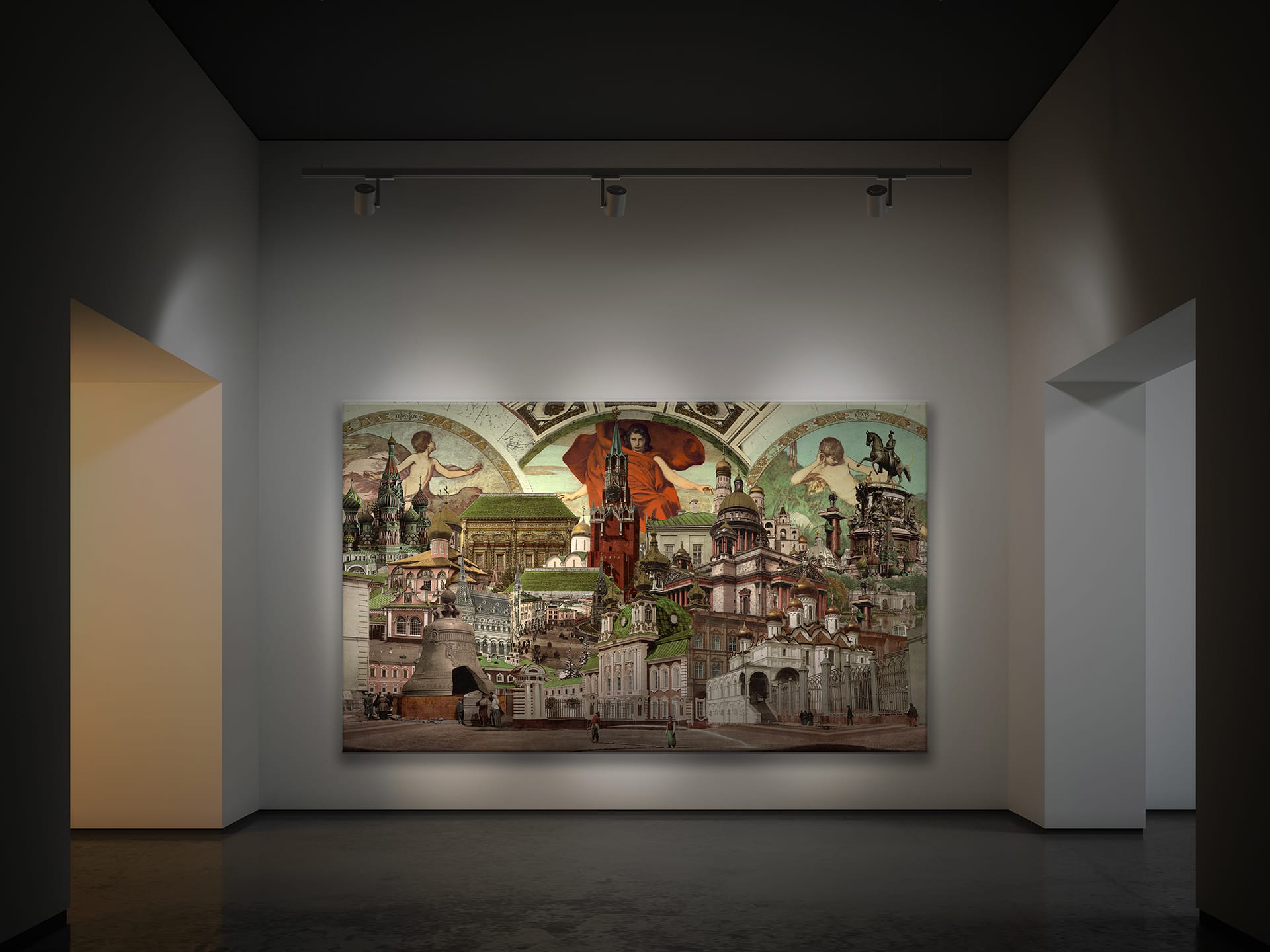
New Image Order
Photocollage of nineteenth and early twentieth-century photochromes.
2022
New Image Order creates a fictional reality that sheds light on human history by reordering images. The photochrome process involves creating color images from hand-painted black-and-white photographic negatives, which are then transferred to printing plates through colored gels. Back then, the result must have looked like magic.
Reordering images from fragments of the past challenges the boundaries of time and space, inviting viewers into a realm where history and fiction converge, where painting and photography meet. In an era where the concept of a 'new world order' resonates within politics, New Image Order examines shared layers of history, culture, and identity that shape life. By rendering the world as a stage, the assembled images offer a canvas for the past to coalesce with the present, inviting viewers to ponder the ever-evolving tapestry of our world.
https://stevesabella.space/pages/new-image-order




On Earth 1
A photo-collage of a lake in Berlin.
200 / 180 cm
On Earth 2
A photo-collage from Mount Etna in Sicily
200 / 180 cm
On Earth 3
A photo-collage from the Amalfi Coast in Italy
200 / 180 cm
https://stevesabella.space/pages/on-earth
“Approaching, one notices that the collages are populated with scenes, fused together by photographs Sabella has taken on his travels. Yet, there is something alien in these images of our planet. Their depth and painterly perspective follow the logic of a dream, carrying various temporal references. Like fluid modes between painting and photography, their visual language is simultaneously historical and contemporary - a multicoloured plastic raft floats alongside a Nymph in a paradisiacal landscape; a solitary traveler seems to wander on Mars or ancient Sparta.
These collages reproduce our world in a simultaneously familiar and alien way, containing many layers and countless connotations. Sabella leaves it to the viewer to journey through their yet unseen panoramas, and possibly discover a new detail, a deeper reading, in each voyage.” XIBT Art Magazine
